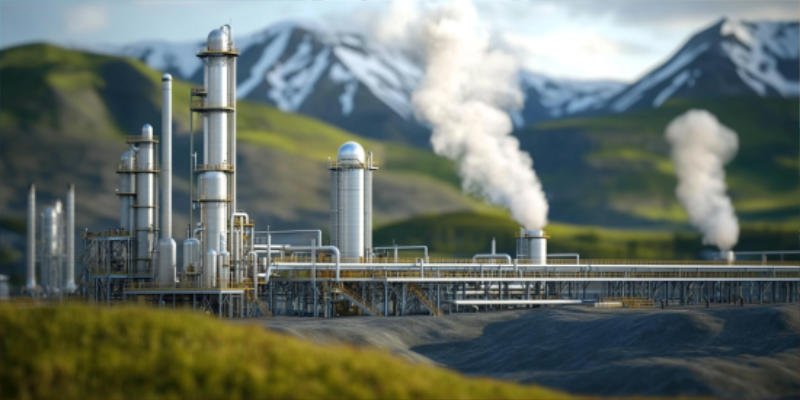Geothermal Energy: A Viable Solution or Overhyped Dream?

Geothermal energy has long been hailed as a renewable and sustainable source of power, drawing heat from the Earth’s core to generate electricity and provide direct heating. As governments and environmental organizations push for cleaner energy solutions, geothermal is often presented as a promising alternative to fossil fuels. However, despite its advantages, there are significant challenges that raise questions about its practicality as a large-scale energy source. While geothermal energy has been successfully deployed in certain regions, its widespread adoption remains hindered by economic, technological, and geological factors.
The Advantages of Geothermal Energy
A Renewable and Sustainable Resource
Unlike fossil fuels, geothermal energy is a renewable resource, as the Earth continuously produces heat from radioactive decay deep within its core. This makes it a sustainable source of power that, in theory, will never run out. Unlike solar or wind power, geothermal energy is not subject to weather fluctuations, providing a consistent and reliable energy source. This reliability makes it an attractive option for grid stability, ensuring a steady electricity supply regardless of season or time of day (International Energy Agency).
Low Greenhouse Gas Emissions
Allthough it can be disputed to what extent CO2 emissions pose a problem, for those who do think that, it is worth noting that Geothermal power plants produce significantly fewer greenhouse gas emissions compared to coal or natural gas plants. Unlike fossil fuel power stations, which release large quantities of CO2 and pollutants, geothermal plants have a much smaller carbon footprint. Binary-cycle geothermal plants, in particular, emit almost no emissions as they operate within a closed-loop system, making them one of the cleanest energy sources available (U.S. Department of Energy). Additionally, the carbon savings from geothermal power can contribute to national and global emissions reduction goals, making it a key player in the transition to cleaner energy.
Efficient Land Use and Space Requirements
Geothermal plants require less land compared to wind or solar farms, making them an attractive option in regions with limited available space for energy infrastructure. Unlike sprawling solar arrays or wind farms that require vast areas of land, geothermal facilities have a much smaller physical footprint. This makes them particularly valuable in areas where land use is a concern, such as densely populated regions or ecologically sensitive zones (National Renewable Energy Laboratory).
Potential for Direct Use Applications
Beyond electricity generation, geothermal energy can be used directly for heating residential and commercial buildings, greenhouses, and even industrial processes. Direct use of geothermal energy is highly efficient and can significantly reduce energy costs for heating-intensive industries, such as food processing and manufacturing. In some cases, geothermal heat has been utilized for aquaculture, spa facilities, and district heating systems, further expanding its potential applications (Geothermal Energy Association).
The Challenges of Geothermal Energy
High Initial Costs and Financial Barriers
One of the biggest drawbacks of geothermal energy is the high upfront cost of exploration and drilling. Locating viable geothermal reservoirs requires extensive geological surveys, and drilling wells can be an expensive and risky endeavor. Initial investment costs for geothermal power plants are significantly higher than those for solar or wind energy, making it difficult for many countries to finance large-scale projects. Even with long-term operational savings, the initial expenditure can deter governments and investors from pursuing geothermal development (International Geothermal Association).
Geographical Limitations
Not all regions have access to high-temperature geothermal resources. While countries like Iceland, the Philippines, and the United States have abundant geothermal potential, many regions lack viable geothermal reservoirs, limiting widespread adoption. The best geothermal sites are often located in geologically active areas, meaning many countries must rely on expensive deep-drilling technology or enhanced geothermal systems (EGS) to tap into sufficient heat sources (World Bank Energy Sector Management Assistance Program). Without favorable geological conditions, geothermal power remains impractical for many parts of the world.
Environmental Concerns and Seismic Activity
Geothermal drilling can trigger seismic activity, particularly in areas with active fault lines. Enhanced geothermal systems (EGS), which involve injecting water into hot rock formations, have been linked to small earthquakes in regions such as Switzerland and South Korea. These seismic risks have led to public concerns and regulatory restrictions in some areas, limiting the expansion of geothermal projects. Additionally, improper management of geothermal resources can lead to land subsidence and contamination of groundwater with harmful minerals released from deep underground (Geothermal Resources Council).
Potential for Resource Depletion
Although geothermal energy is renewable, excessive extraction in certain locations can lead to resource depletion over time. If not managed properly, geothermal reservoirs can cool down faster than they can naturally replenish, reducing efficiency and power output. In some cases, overuse of geothermal wells has led to declining energy yields, requiring additional drilling and reinvestment to maintain production levels. Sustainable management strategies, such as reinjecting extracted water into the reservoir, can help mitigate this issue, but they require careful oversight (U.S. Geological Survey).
How Realistic Is Geothermal Energy for the Future?
While geothermal energy offers numerous advantages, its viability on a large scale is still constrained by technological, financial, and geographical factors. Current geothermal technology is most effective in geologically active regions, making it an excellent choice for specific countries but not a universal solution. Despite its potential, geothermal energy currently accounts for a small fraction of global electricity production, with much of its use concentrated in a handful of nations with optimal conditions.
Future advancements in geothermal drilling, deep well technology, and enhanced geothermal systems could expand its accessibility, but further investment and policy support are necessary. Research into ultra-deep drilling techniques could unlock new geothermal resources in regions previously thought unsuitable for development. Governments and private investors must be willing to fund these innovations to make geothermal a more competitive energy source.
For now, geothermal energy will likely remain a valuable but regionally limited component of the global energy mix. Countries with access to high-temperature geothermal resources will continue to benefit, while others may struggle to justify the high costs and technical challenges associated with its development. However, as the world moves towards cleaner energy, geothermal remains a promising area for future breakthroughs and expansion.
References:
- International Energy Agency. “The Role of Geothermal Energy in the Global Energy Transition.”
- U.S. Department of Energy. “Geothermal Energy Basics.”
- National Renewable Energy Laboratory. “Land Use Efficiency of Renewable Energy Sources.”
- Geothermal Energy Association. “Direct Use Applications of Geothermal Energy.”
- International Geothermal Association. “Economic Challenges of Geothermal Power Development.”
- World Bank Energy Sector Management Assistance Program. “Global Geothermal Energy Potential and Barriers.”
- Geothermal Resources Council. “Seismic Risks of Enhanced Geothermal Systems.”
- U.S. Geological Survey. “Sustainability of Geothermal Reservoirs.”
- Renewable Energy Policy Network. “Advancements in Enhanced Geothermal Systems.”
- Energy Information Administration. “Geothermal Power Trends and Market Outlook.”


















